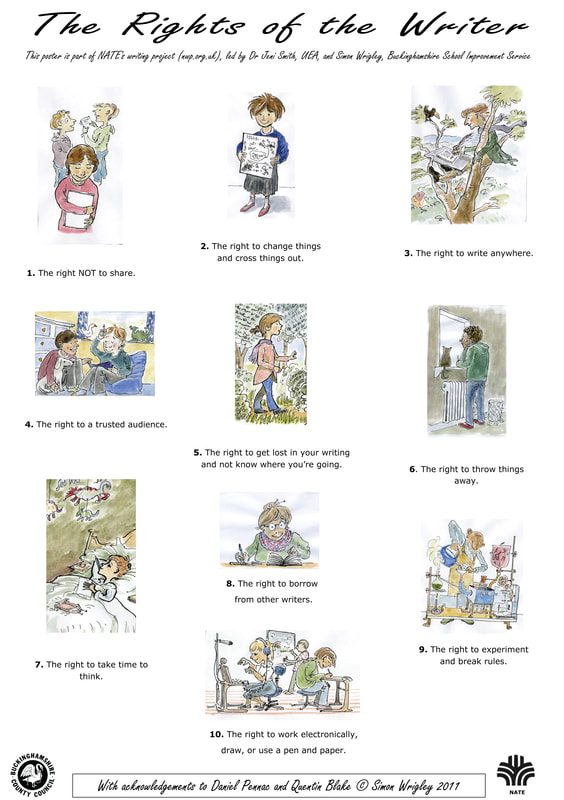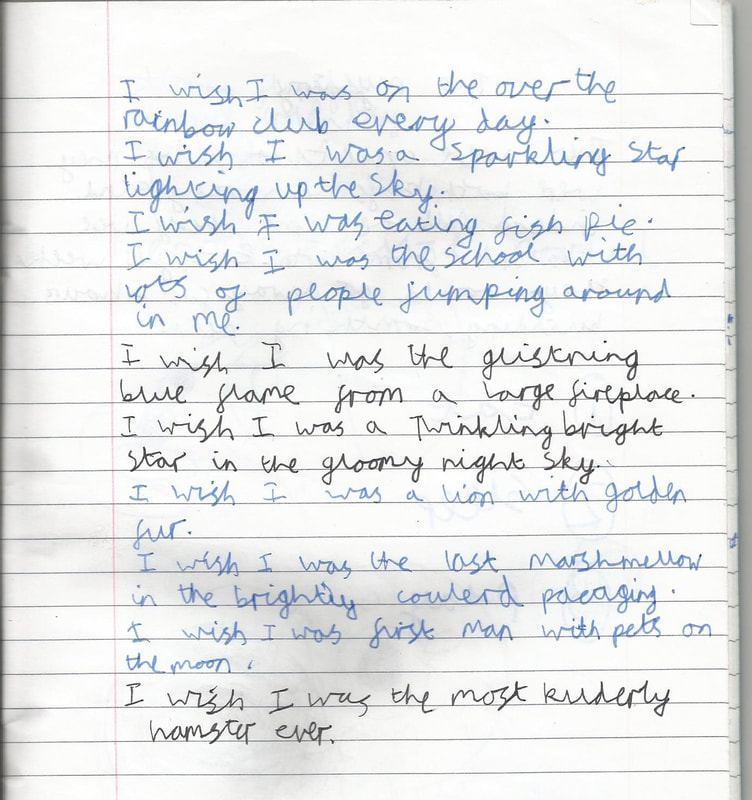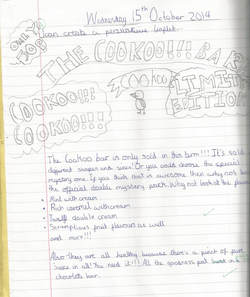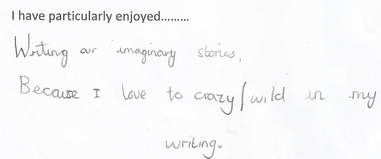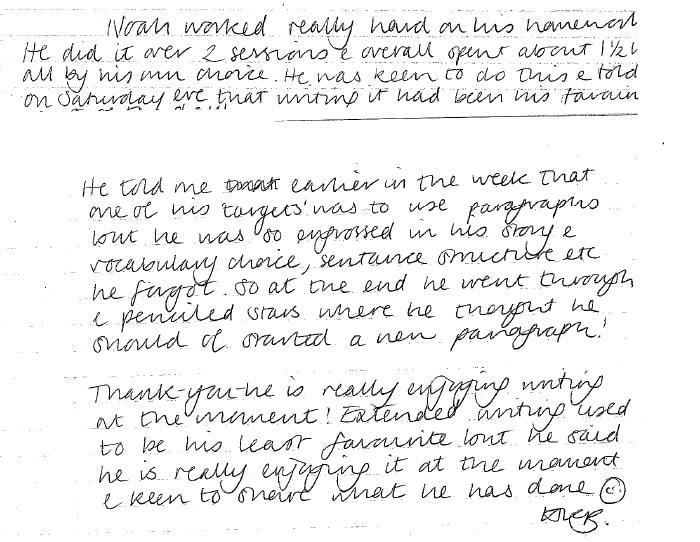During our first session with Simon Wrigley, he discussed with us the importance of not only teaching writing, but being writers ourselves. He impressed that we need to instil in the children that not only do they regularly practise their writing, but we do too. This will allow us to empathise with pupils more easily during the writing process. He began the session by showing us the ‘rights of the writers’.
|
|
After sharing these rules, he discussed the idea of a writing journal. A journal should be a child’s own private property and never marked by an adult. This allows children the opportunity to express themselves freely through writing. He suggested that children should be given a set writing time each week (preferably a 30 minute slot), with children performing a writing task, along with the rest of the class. The teacher should write alongside the children to model enjoyment. Children should then be given the opportunity to share with their peers, if they wish to, or to keep their work private. He covered the idea of a response partner – giving children a partner to read part or all of their story, ensuring that this partner does not judge the writing but instead states what they liked about it, what interested them or how it made them feel.
Simon suggested many writing journal activities throughout the session, starting us off by encouraging us to write a list of our favourite words. We then each shared one with the group, before writing a passage, using the alternate sentence stems, ‘I like it when….’ and ‘I hate it when…..’. He encouraged us to use drawings to help inspire our writing and we drew a sketch of a place that is special to us, labelling key parts, before writing a description of this place.
In sessions that followed, various writing journal activities were suggested, including a ‘writer’s scavenger hunt’. All activities had the aim of making children more enthusiastic about writing, as a child who enjoys writing is likely to practise writing regularly and therefore make improvements.
In many ways the training on writing journals changed the way I teach writing. It gave me a chance to ‘sit in their shoes’ for a while, and just like the children in my class, I found myself worrying over how to start, anxious over sharing my ideas and worrying if I was ‘doing it wrong’.
As soon as I returned to school, I was eager to trial out the use of writing journals myself. They were already being used in Year 6 at the time so I ordered enough for both Year 4 classes.
After the journals had arrived, I handed to each of my pupils ‘The Rights of the Writer’ sheet and asked them to discuss the rights, and which they felt was most important. Each child came up with different ideas, but they all loved the idea of the writing journal encouraging freedom and immediately were asking, ‘Can I take it home?’, ‘Can I draw in it to help me?’ One boy spent a long time working on a cartoon strip, whilst another child took home her writing journal and wrote a letter to me to tell me about an issue that had been concerning her. I was really impressed by how many wished to take their journals home. This was their property and therefore it was something they immediately treasured.
|
Each morning we have 10 minutes during registration time. Aware of time constraints, I set about using this time for writing journals, rather than silent reading. Every morning I put on the board a writing journal activity and the children wrote in their journals. Although I left children with the option of reading or writing, almost without exception, the children opted to write. Focus pupil 3, a boy who particularly struggles to gain enthusiasm to write, believing he is ‘not good at writing’, really took to writing journals and although he often only has 10 minutes for his activities, he can often write far more in this time than he does in a Literacy lesson (see Appendix 31).
|
|
The progression from a class that were on the whole very reluctant to write and use their imagination has been clear. I have been really impressed with the turn around and I feel this is partly due to writing journals. I now regularly have pupils of a range of abilities come and show me writing they have been doing at home (Appendix 34).
One pupil on her end of year questionnaire explained that writing was her favourite subject as you could be ‘crazy/wild’.
I think it is exactly this which has made the most difference to my class - the idea of freedom to write. For homework, I set one boy the task of describing a fairy tale castle. He had started the year very keen on Maths and reluctant to write and use his imagination for Literacy activities. His mum explained to me that she was stunned when he started the task immediately, even trying to use personification (‘The castle hasn’t been seen for years so perhaps it just strolled off’) When his mum pointed out castles don’t walk, he answered ‘They do in my imagination and Miss Harrington loves it when I use my imagination’. It is this freedom to experiment which I think give writing journals their value and it is something I will try and use increasingly. Since their introduction, the children in my class have been increasingly enthusiastic about Literacy lessons in school.
|
|
The idea of ‘teachers as writers’ is something I have been attempting to transfer to my own classroom. As we have extended writing on a Friday, as often as possible, I sit down with the children and write amongst them. Occasionally I will write on the board, on other occasions, I will write in my own journal. When children are very stuck, I sometimes show them how I started and encourage them to ‘magpie’ if they wish. This has worked very well. Towards the end of the session, I often share part of my writing with the children, before they share their own. Even those less enthusiastic children are usually very keen to read their work aloud and this is something I have been pleasantly surprised by. My class are now able to respond neutrally, and do not always notice the ‘errors’, which we can occasionally focus too much on.
Although I have not been able to invest time in a 30 minute writing session, this is something which we are proposing to do next year in our school. I am due to deliver a staff training session on writing journals very soon
